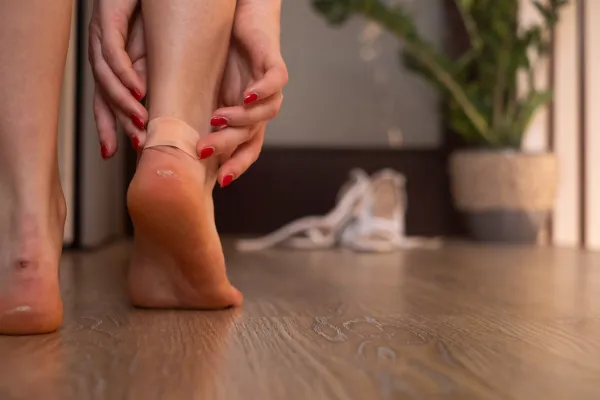
Breaking the Ice: Why Corn Plasters Might Be Making Your Feet Worse
If you’ve ever had a hard, painful bump on your toe or the ball of your foot, chances are you’ve tried a corn plaster to get some quick relief. These little circular pads with acid in the middle are often marketed as an easy fix for corns. But here at Coventry Foot Doctor, we’ve seen what those “easy fixes” can turn into — and it’s not pretty.
Let’s break the ice: corn plasters might be making your foot problems worse, especially if you’re using them without guidance. In this post, we’ll explore why these common treatments can be harmful, who’s most at risk, and what you should do instead.
What Are Corns—and Why Do They Form?
Corns are thickened areas of skin that form in response to friction or pressure, often from tight shoes, high heels, or abnormal walking patterns (biomechanics). They're your body’s way of protecting a vulnerable area.
There are two main types:
Hard corns, which usually form on the tops or sides of toes.
Soft corns, which form between toes and stay moist, often becoming sore or infected.
Corns are a symptom, not a cause. Treating the surface without addressing the pressure underneath is like putting a plaster on a leaking pipe—ineffective and temporary.
What Are Corn Plasters—and How Do They Work?
Corn plasters usually contain salicylic acid, a keratolytic agent that helps break down the thickened skin of the corn. In theory, they soften the area so it can be peeled or worn away.
Sounds ideal, right? Not so fast.
The Hidden Dangers of Corn Plasters
1. Chemical Burns and Skin Damage
Salicylic acid is powerful. When used improperly, especially on sensitive or thin skin, it can cause:
Chemical burns
Blisters
Open sores
Once the surrounding skin is damaged, you’re vulnerable to infections, especially in areas that rub against footwear daily.
2. Delayed Healing
Ironically, trying to “speed up” healing can slow it down. We regularly see patients who have used a corn plaster only to end up with:
Painful wounds
Damaged skin tissue
Difficulty walking
In some cases, they’ve needed antibiotics or even minor surgery to correct the damage caused.
3. Diabetics and High-Risk Feet: Serious Complications
If you have diabetes, poor circulation, or nerve damage, corn plasters are not just risky—they can be dangerous. Even a small burn or sore can turn into a non-healing ulcer, potentially leading to hospitalization or worse.
Sadly, some patients only seek help once things have gone too far, thinking they were “just treating a corn.”
Why DIY Treatments Often Backfire
We get it—pharmacy aisles are full of over-the-counter solutions promising quick results. But corns are never just skin-deep. They’re a signal that something is off with your gait, footwear, or foot structure.
Slapping on a plaster without knowing what’s underneath is like turning off your fire alarm without checking for smoke.
What You Should Do Instead
Here’s what we recommend at our clinic
✅ Get a Proper Diagnosis
Not all thickened skin is a corn. It could be a wart, callus, or something else entirely. Let a professional assess it properly.
✅ Treat the Cause, Not Just the Corn
We evaluate pressure points, footwear, and walking mechanics to treat the root issue, not just the symptom.
✅ Use Safe Removal Techniques
Our clinicians can remove corns safely, often in a single visit, and offer advice or custom orthotics to prevent recurrence.
✅ Know When to Refer
If you’re diabetic or have vascular issues, corn removal should only be performed under clinical supervision. Your feet deserve expert care.
When to See a Podiatrist
If your corn:
Keeps coming back
Becomes painful or inflamed
Bleeds or changes color
Is present on a foot with poor circulation or diabetes
—don’t wait. Early intervention can prevent complications and keep you mobile.
Final Thoughts: Your Feet Deserve Better Than Plasters
Corn plasters promise quick relief—but for many, they deliver more harm than healing. At Coventry Foot Doctor, we believe foot care should be precise, safe, and proactive.
So, before you peel and plaster, come in for a consult. Your feet will thank you.
Ask Abid And His Team
Fill in the form to request a Call From Our Team
One of our team will call you for FREE and answer any questions or concerns you may have about your uncomfortable Foot Pain
© Copyright 2022. Biomechanix Clinic Ltd. All rights reserved.





